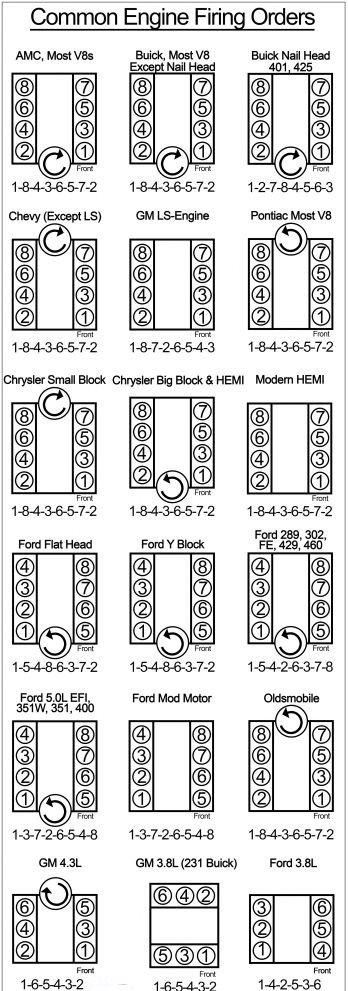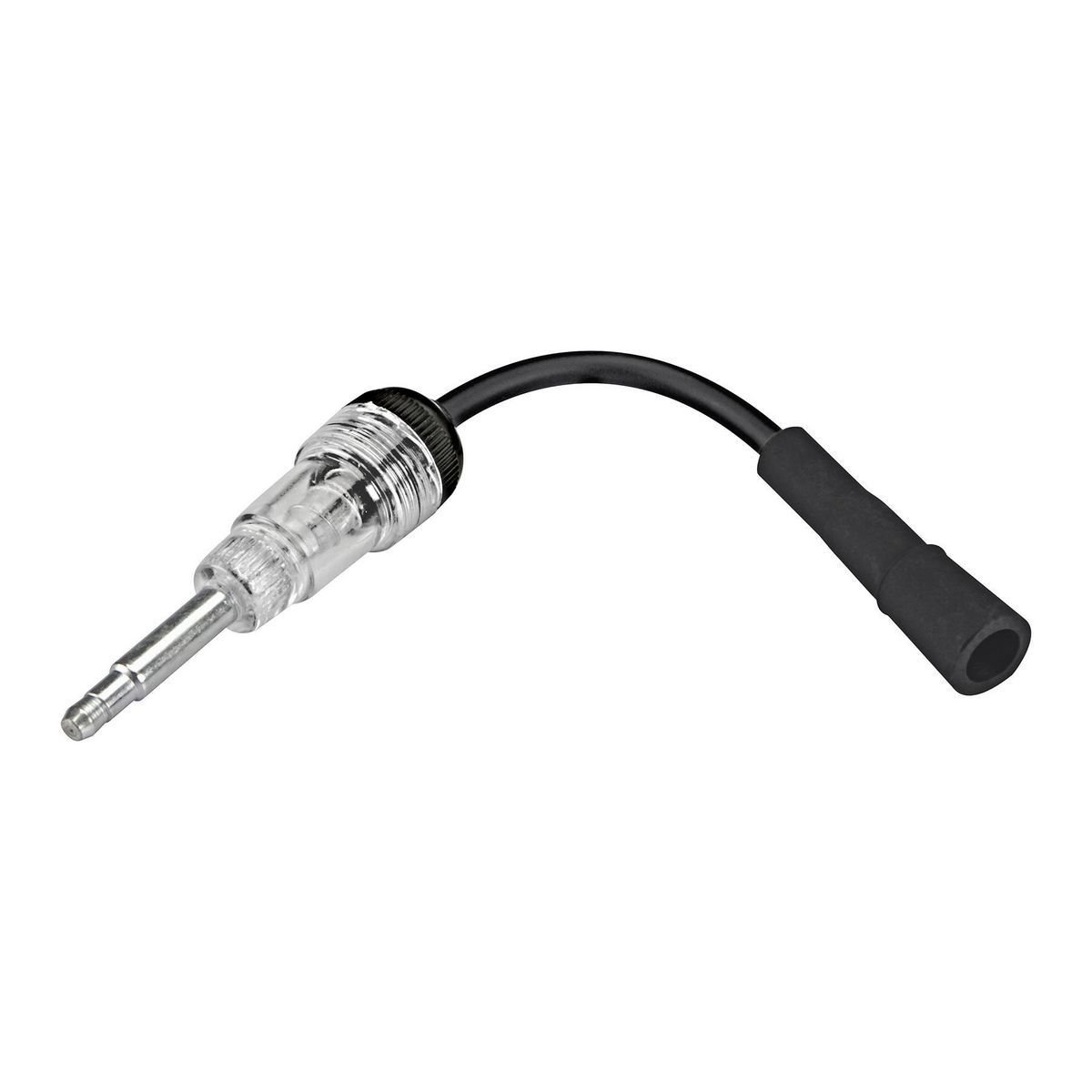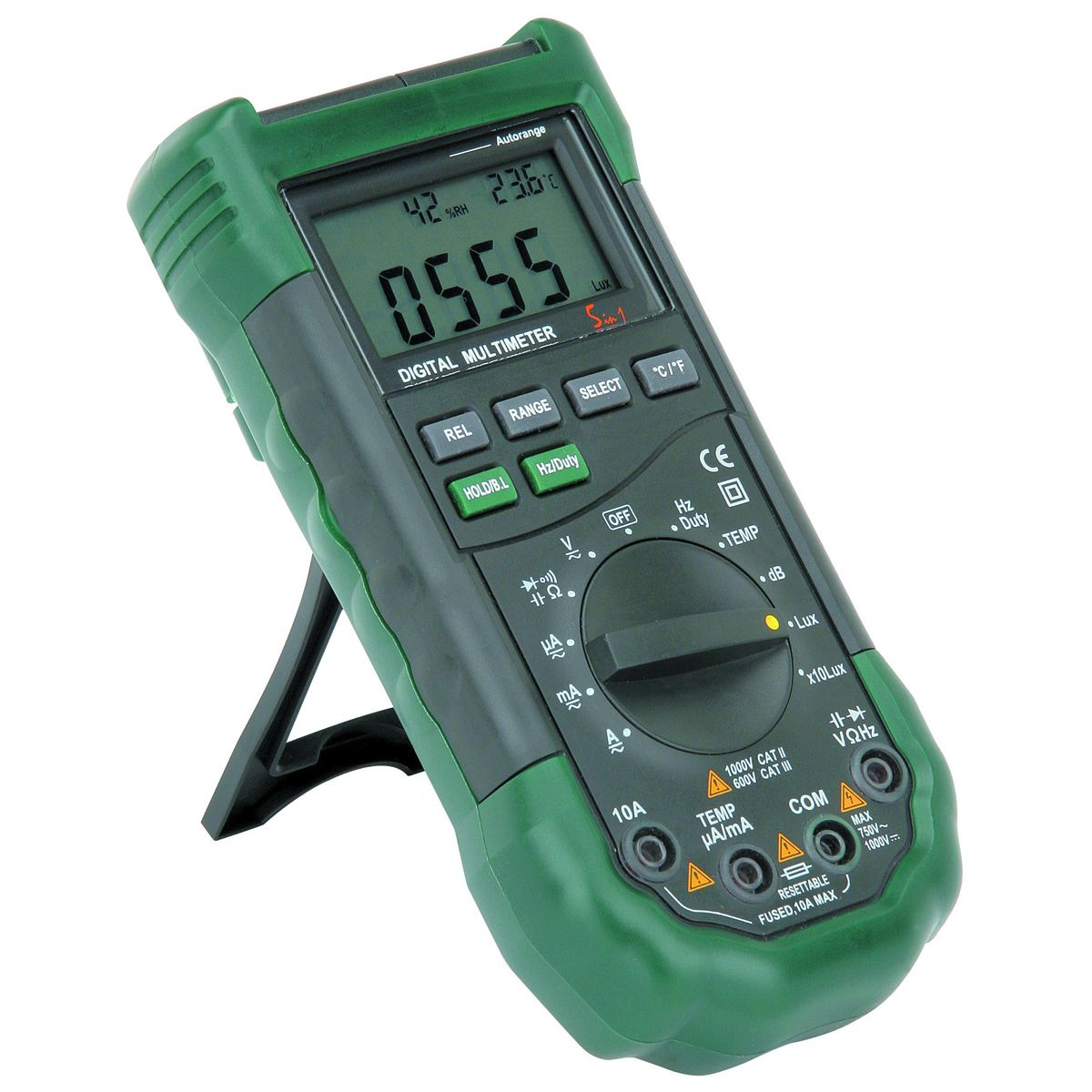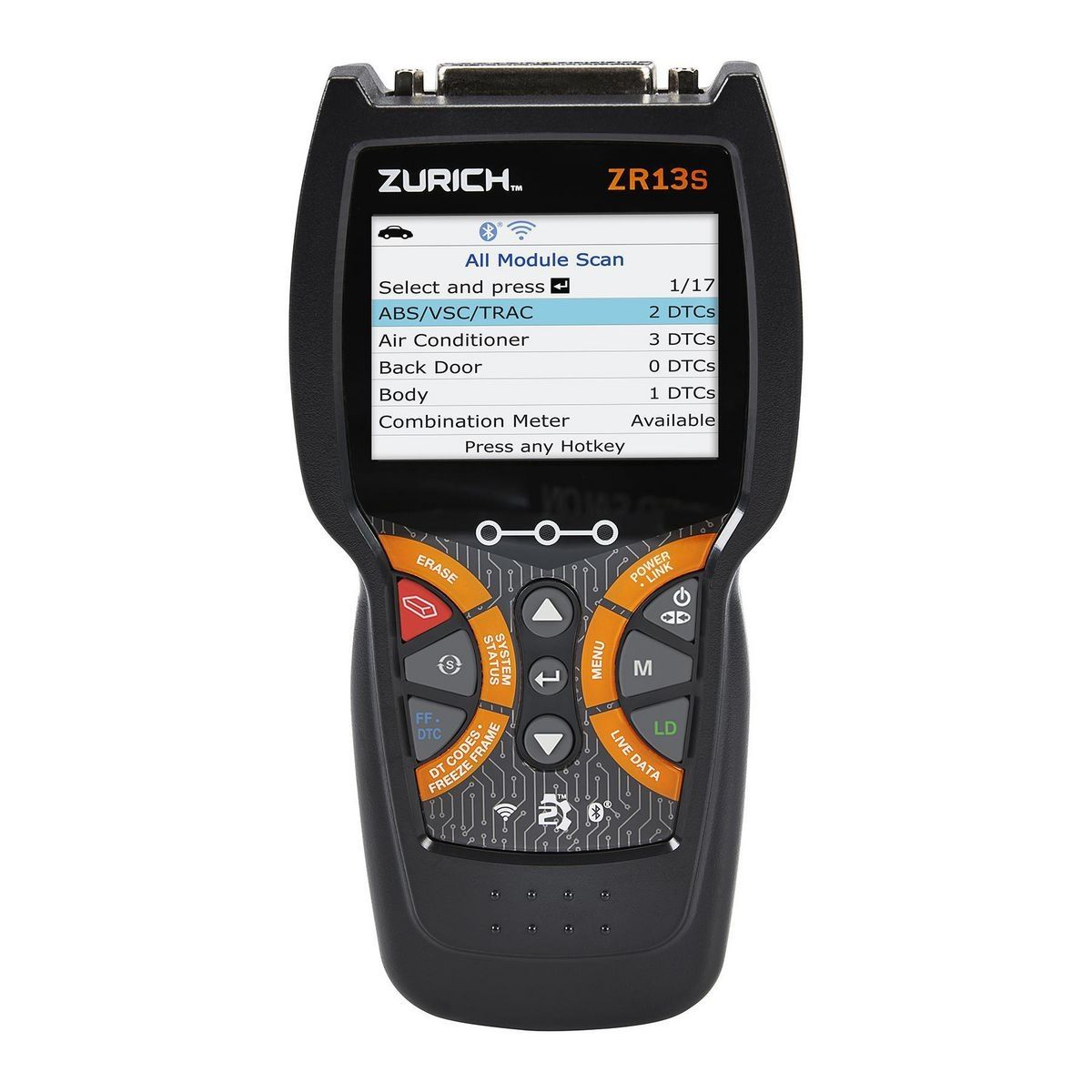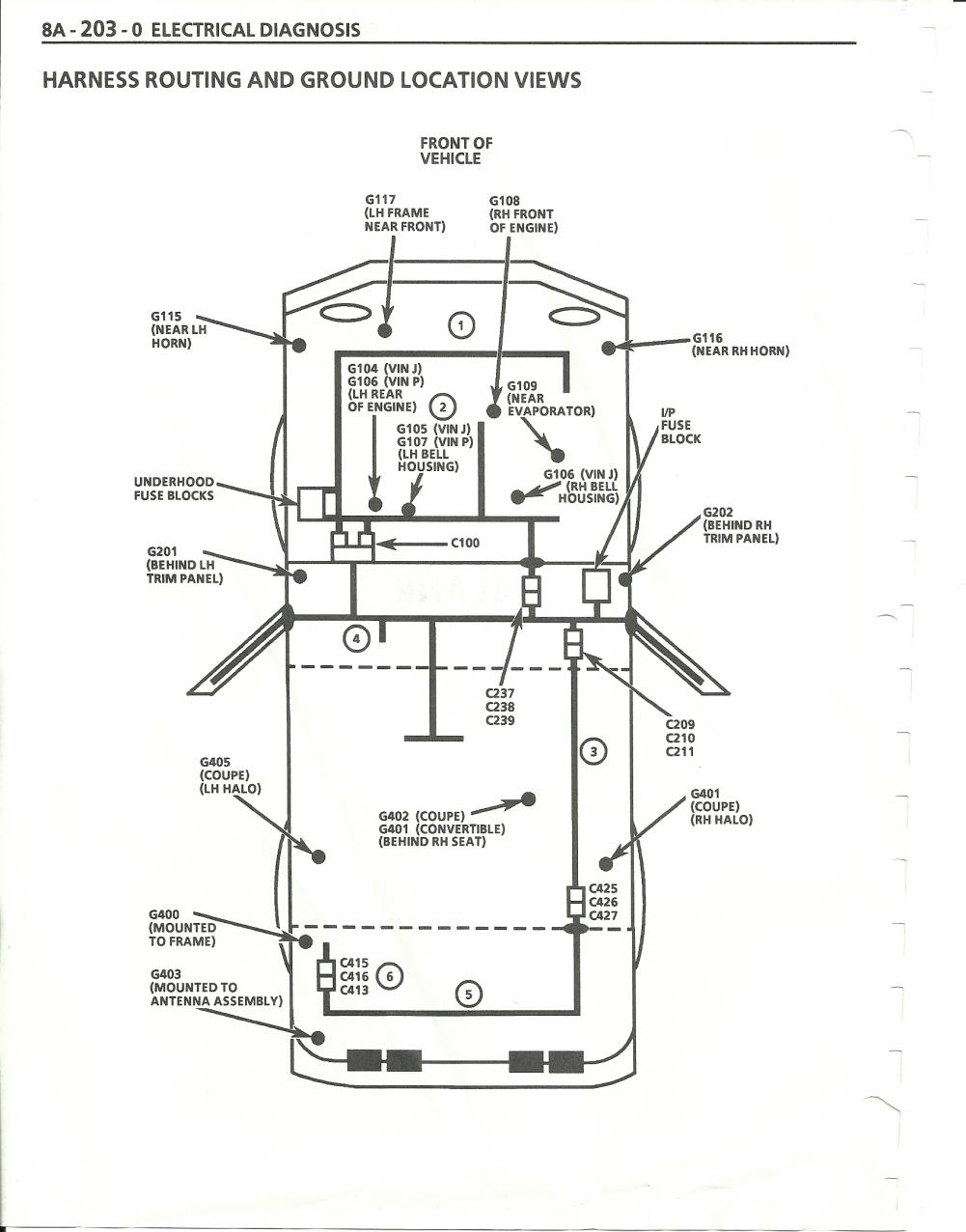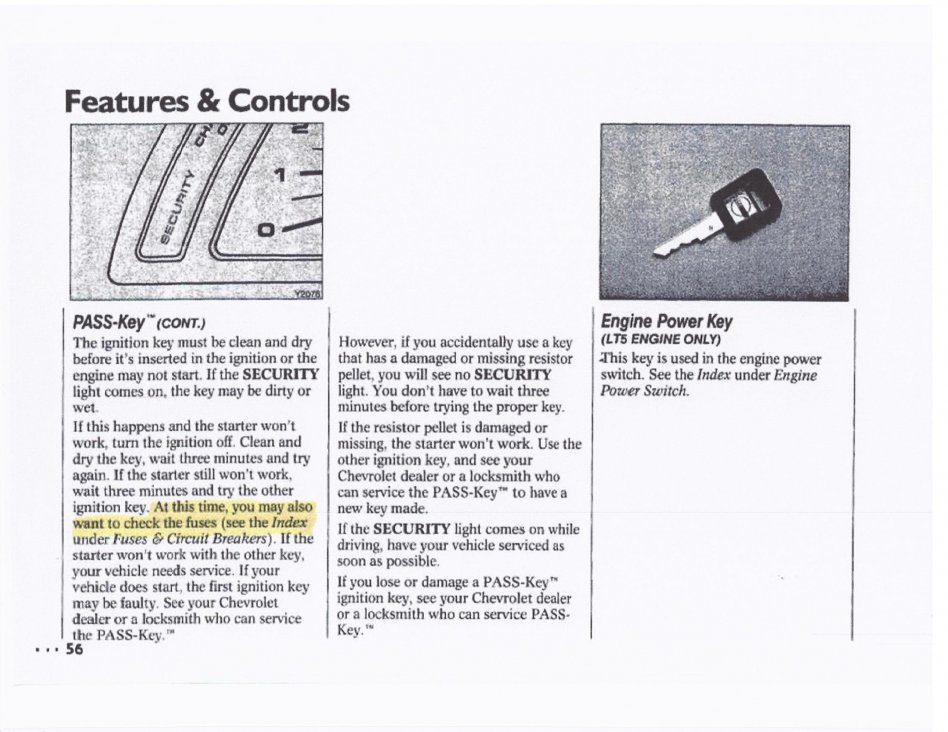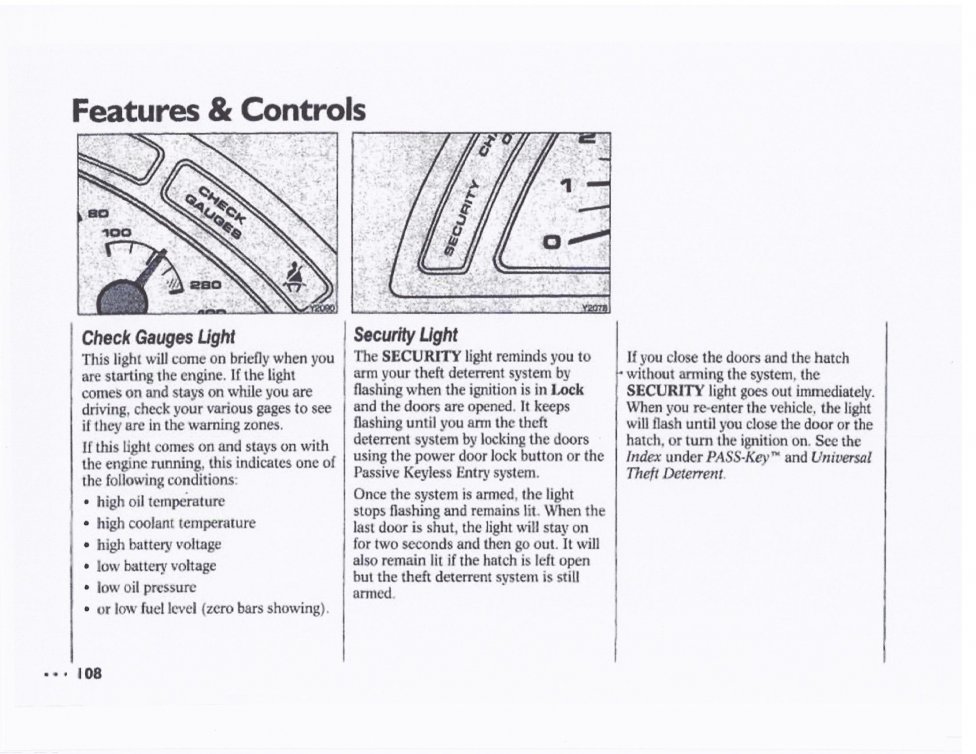IF YOU DON,T YET HAVE A FACTORY SHOP MANUAL FOR YOUR CAR YOUR WORKING AT A DISADVANTAGE
it is always helps to post your location,when posting questions, at least the city & state your located in because theres a good chance an experienced hobbyist or mechanic on this site may be reading this, located local to you, who is willing to help either for free or at low cost! or at least post advices and places to get parts locally
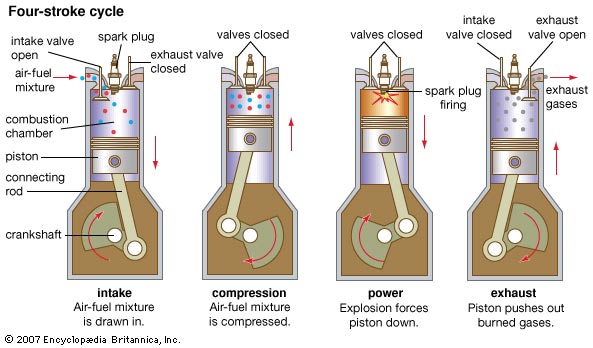
Ive been building engines for over 47 years now, and yeah,eventually even my hard head learned, a few things, but I,m sure willing too learn and ask questions, and use any new info posted
can a few of you gentlemen explain to me why??
when I suggest isolating and testing each separate potential component of both the fuel and ignition, systems and checking the engines valve train and checking compression, fuses, and sensors and pulling trouble codes and using the factory shop manual and a few tools like a mufti-meter and compression gauge, IR TEMP THERMOMETER,VACUUM GAUGE, and listed tests, even when I supply rather extensive links showing extensive detailed info, the majority of the guys reading thru the threads obviously ignore the info that could be used too locate the source, in most cases youll need too, isolate it test it and fix it rather than making random wild guesses without any facts or testing?
look if you don,t isolate the problem to its source through accurate testing there,s almost no other logical way to locate and fix the problem.
GUYS I NEVER SAID I,M A GREAT MECHANIC, BUT I HAVE LEARNED THAT IF YOU TAKE THE TIME TO BREAK THINGS DOWN INTO THE SIMPLEST PART AND DO A BIT OF RESEARCH, FINDING ANSWERS IS FAR LESS INTIMIDATING OR DIFFICULT,
youll need to isolate any problem to its source, be it engine, drive train, suspension,fuel system, electric, cooling, exhaust, etc. then further logically isolate it to the defective component, or part needing adjustment or replacement
like the old saying how do you eat an elephant......one little bite at a time!
all the answers are readily available, theres known testing procedures and listed test results you can expect, and procedures listed in the shop manual for isolating and testing components, you don,t need to be a genius, you just need to be logical and persistent and not afraid to learn new things while getting your hands dirty at times
THE FASTEST AND EASY ROUTE IS TO ISOLATE AND TEST< NOT RANDOM GUESS WORK
buy a CHEVY SHOP MANUAL FOR YOUR YEAR CORVETTE!
set and verify your ignition timing, pull trouble codes,set your tps and iac,, then check for vacuum leaks on the lines and intake,then get out your multi meter and verify all the sensors, chances are good its a defective heat sensor or defective o2 sensor, a logical step by step approach will lead you to the problem, youll be amazed at what youll learn reading links. use of a shop manual and multi meter can be very helpful
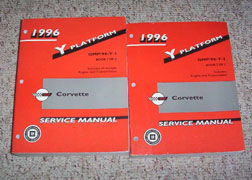
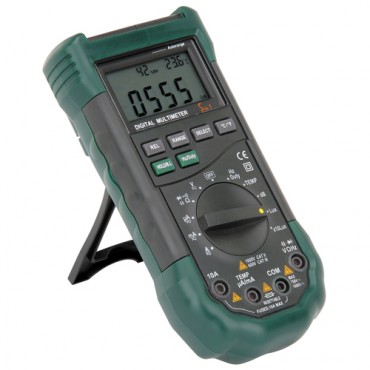
http://www.harborfreight.com/5-in-1-dig ... 98674.html
learn to use the factory shop manual, and a multi meter and LISTEN to the engine closely, tapping and high pitch whines can indicate defective injectors or fuel pressure regulators, fuel pumps,mis- adjusted valve train components, worn distributor parts, check all the fuses and electrical grounds and corrosion on connections thats something thats frequently over looked etc.
http://www.chevythunder.com/Flow chart index.htm
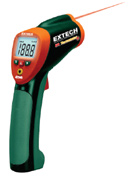
http://www.professionalequipment.com/ex ... ermometer/
having a good cross check tool like a quality IR temp gun, and a decent multi meter, sure helps find the truth as far as a defective gauge or sensor
READ THESE LINKs
viewtopic.php?f=50&t=10012&p=38779#p38779
viewtopic.php?f=36&t=63
rule one
if your installing a new component ,read the manufacturers instructions carefully and call the tech guys if ANYTHINGS not 110% clear
RULE two
IF something won,t fit or function....STOP, call the the tech guys ,after you re-read the manufacturers instructions carefully and measure carefully so you sound at least 1/2 way like you know what talking about, then call the tech guys if ANYTHINGS not 110% clear
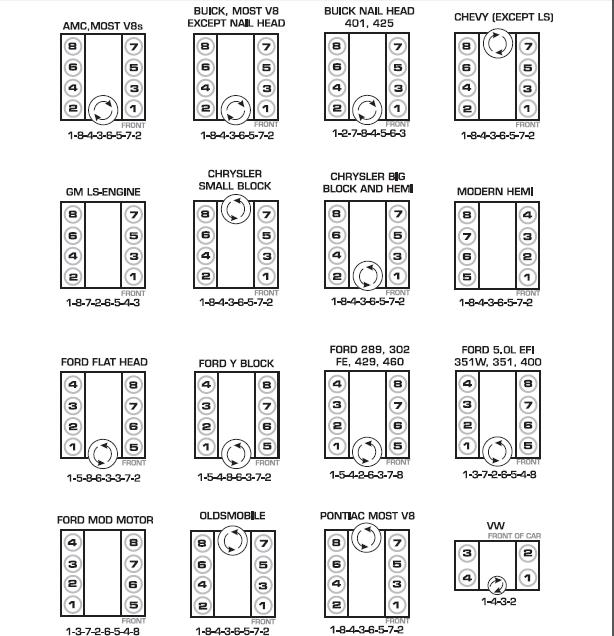
RULE three
STOP AND DO THE REQUIRED RESEARCH if youve got questions
I never mind sounding dumb as long as I get the correct answers, so I won,t LOOK dumb by doing something wrong

rule four
isolate the problem to a lack of or Mal -function in,engine compression,ignition,lubrication,cooling, fuel supply,drive-train,or suspension, or a mechanical or electrical fault as soon as you can, this can only be done by testing and verification, don,t guess or assume anythings correct until you verify it yourself
yes reading the sub linked info is mandatory if you want answers
http://www.helminc.com/helm/welcome_sel ... M2S049ETF8
CHECK ALL YOUR FUSES WITH A MULTI METER
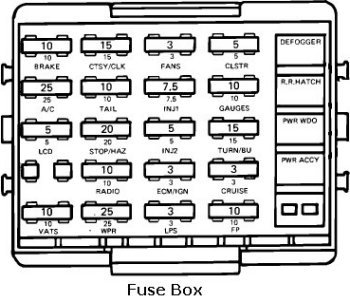
http://www.clarks-garage.com/shop-manua ... tm#oil-low
http://www.davidfarmerstuff.com/
when ever you get into unexplained symptoms the answer remains the same....in every case,.... you drop back to the basics and do a few tests, get out a multi meter and verify every fuse is good, and you have 13 volts at the battery and youve got at least a 1/2 tank of fresh fuel, before you start chasing your tail, thinking about more complicated problems
find the cause, you isolate, each function or system or malfunction to its related components then test, each individually, use of the shop manual is almost mandatory
erase old trouble codes and pull new codes after each change, made.
read the codes, and follow the FACTORY SHOP MANUAL INFO
there could be several reasons and a few tests will limit the potential problem areas,valve float, restricted fuel pressure,or volume, badly adjusted carb floats, wrong jets, wrong power valves, dirty or restricted air filter, cam timing, ignition timing, carb being badly adjusted,valves being badly adjusted, ignition advance curve not correct, timing tab or damper, not correctly indicating TDC, etc. ignition spark should be bright blue and impressive, if its, weak,narrow, yellow or red theres a problem so research the cause, verify the coil and voltage
you start by dropping back to the basics , adjusting or verifying or correcting each potential problem area and eliminating it as the cause, then and only then moving on to the next area, guessing will drive you nuts and cause you to throw large amounts of un-necessary parts at the problem with little resulting improvements. a logical step bye step approach is best, youll need to verify cylinder compression, ignition, strength and timing and fuel and air delivery, ID also suggest a compression test and a general checking over,each potential engine and drive line sub-system carefully, with a timing light,vacuum gauge, fuel pressure gauge, VOM meter , ETC. and adjusting valves, checking for vacuum leaks, check fuel pressure and post clear pictures of spark plugs as they give a ton of info if you know how to read them, etc.it helps a great deal to know what your working with ,ID suggest starting, by verifying TDC and having the correct timing tape on your damper then,start with 8 degrees btdc and verifying the full advance of 36 degrees total is all in at 3200rpm as a base line, once youve got that, as a standard you can tune and run the car and eventually try tweaks to the basic ignition curve if needed, once you have an ignition base line, move on to the carbs tuning, you also need to keep in mind that what goes in as a fuel /air mix needs to go out as a much expended volume of hot gases and a restrictive exhaust will effectively block most attempts to get more power from an engine, so measure exhaust back pressure. you might be amazed at what a couple hours research into the subject will do to help you build a much more durable engine, and actually reading thru links and sub-links and asking questions helps a great deal
you might be amazed at the number of times "CARBURETOR PROBLEMS" are cured with getting the IGNITION, TIMING AND ADVANCE CURVE WORKING CORRECTLY, and check out the simply things your 100% sure you did correctly, because I can,t begin to tell you how many times I see guys who have the firing order on the ignition wrong, or guys that install a 4/7 swap cam and still use the standard ignition firing order or guys that never verify TDC and ignition advance curves.
get an IR temp gun and check for wild variations in exhaust temps, get a compression test done, do a logical check to verify each cylinder fires etc.
Id also be pulling and changing the oil filter and inspecting the old one for metallic debris indicating a worn cam lobe, assume EVERY SUB SYSTEM could be miss adjusted or defective EVEN if you just replaced parts recently
basically an in depth tune-up and system verification is whats needed
viewtopic.php?f=54&t=4611
viewtopic.php?f=70&t=202
viewtopic.php?f=55&t=109
can,t get it started? these bits of info should help
always drop back to basics
check your battery cable connections
check your fuses and get out your shop manual.
IF you have the option pull trouble codes.
have you verified TDC on the damper and timing tab?
have you done a compression test?
are all the spark plugs firing correctly?
did you degree in the cam or just DOT-to-dot install it?
whats your fuel pressure?
have you verified the carbs float levels?
does fuel run out the site holes at idle?
are the needle& seat valves working correctly?
whats your ignition timing?
do you have voltage at the coil?
whats your plenum vacuum?
have you verified the engine got no vacuum leaks?
whats the oil pressure?(did you check the dip stick?)
have you adjusted the valves at idle?
does the distributor timing advance with rpm increases?
have you tried a different carb?
what are the plugs gaped at?
does this happen without an air filter?
have you verified you've have functioning power valves?
what jets are you using?
is there visible fuel flow from the boosters?
whats your battery voltage?
whats your exhaust back pressure?
are you totally sure the fuel free of water and fresh?
have you pulled trouble codes?
drop back to basics, don,t assume you did anything correctly until you verify, its been done correctly.
first remove plug #1 and your valve covers and the distributor cap
stick a large ratchet/socket on the crank bolt and stick your thumb over the #1 plug hole rotate the engine until you feel compression building the rotor on the distributor should be approaching the #1 plug, now watch the timing tab and damper mark, it should line up at the TDC (TOP DEAD CENTER) marks , if its lined up with #6 and you get no compression on the #1 cylinder when the TDC lines up the engine needs another rotation,if you get compression on the #1 cylinder when the TDC lines up with rotor pointing at #6 the distributor 180 out) and the distributor needs to be pulled rotated 180 and re installed.
If your running a carb, now verify you have 4-5 psi of fuel pressure and your getting spark at the plugs once the distributor cap and wires are installed, verify the firing order and once it starts back off each rocker nut at idle until the rocker clicks than tighten slowly just to the point it stops clicking and then add 1/4 turn of preload. verify your exhaust is not clogged, a partly melted catalytic converter can kill off power fast
READ THRU these links, and the sub linked info in them, should help
viewtopic.php?f=55&t=109
viewtopic.php?f=70&t=202
viewtopic.php?f=70&t=875
viewtopic.php?f=56&t=495&p=26600&hilit=clogged+converter#p26600
viewtopic.php?f=70&t=3301
viewtopic.php?f=44&t=773
http://forum.grumpysperformance.com/viewtopic.php?f=70&t=1411
http://forum.grumpysperformance.com/viewtopic.php?f=70&t=967
viewtopic.php?f=81&t=1189&p=2447#p2447
http://forum.grumpysperformance.com/viewtopic.php?f=70&t=270
viewtopic.php?f=32&t=1401&p=3104#p3104
viewtopic.php?f=55&t=1475&p=3325&hilit=testing+sensor#p3325
http://forum.grumpysperformance.com/viewtopic.php?f=70&t=1015
http://forum.grumpysperformance.com/viewtopic.php?f=55&t=1115
http://forum.grumpysperformance.com/viewtopic.php?f=52&t=196
http://forum.grumpysperformance.com/viewtopic.php?f=62&t=882&p=1390&hilit=+propane#p1390
viewtopic.php?f=44&t=773&p=1123#p1123
viewtopic.php?f=44&t=808&p=1180#p1180
viewtopic.php?f=44&t=808
viewtopic.php?f=44&t=777
all it takes to find out why your not making the hp you think you should be is actual testing to find out what your dealing with and what needs improving or changes
be fore you make changes you need to have a base line your working from
do these tests
did you verify TDC or just install the cam dot-to-dot?
whats your compression read?
whats the battery voltage read when the engines running?
post very clear pictures of all 8 plugs?
whats your EXACT ignition advance curve?
whats the plenum vacuum read at wide open throttle?
whats the exhaust system pressure in the collector pipe read at wide open throttle?
viewtopic.php?f=56&t=495
viewtopic.php?f=55&t=109
viewtopic.php?f=70&t=202
viewtopic.php?f=70&t=1809
viewtopic.php?f=70&t=4683
watch the video
http://www.youtube.com/watch?v=YdIGZ-tV ... re=related
is it mechanical?
look for broken parts, loose connections, leaky hoses
are the CATS clogged or the O2 sensors faulty
check the compression in all cylinders
re-adjust the valves
look for vacuum leaks
look for loose serpentine belts
look for cooling system problems
check the trans fluid level and condition
check oil and fuel levels
check the rear differentials fluid level and condition
check the engines oil level and condition
check the brake fluid level and condition
change the filters
check the throttle body is opening completely
verify the TPS and IAC are set correctly, and use some carb/throttle body cleaner to clean up the TB.
what are the engines oil pressure, fuel pressure and cooling system temps?
if somethings wrong there's usually symptoms that point to the source!
IS it electrical?
verify the MAT, MAP, and or MAF sensors are working correctly
verify the coolant temp sensor and knock sensor are working
set the ignition timing
install new plugs with a .045 gap
verify the O2 sensors ok
look for loose grounds, on the engine,gauges,battery
check the battery voltage
check the fuel pump and relays
use a V.O.M. to verify plug wire resistance
check/replace the distrib cap.
VERIFY ALL SENSORS and FUSES and CONNECTIONS are ok, verify the voltage on the systems correct
IS it fuel related
verify the pressure and flow
verify the injectors are functioning correctly
read the old plugs
use a ir temp gun to verify exhaust temps
throw a couple cans of injector cleaner and 8 oz of MARVEL MYSTERY OIL into a fresh tank of fuel, it can clean out lots of minor varnish in the system
when you try to track down any problem with a cars engine you need to start with the basics of
fuel pressure,
and a compression check,
checking for vacuum leaks,
checking the valves are adjusted correctly,
verify the battery has a minimum of 12.5 volts
and the alternator boosts that while running to over 13 volts
verifying that your timing marks are at T.D.C,on the damper
verify that the timing tab indicates true T.D.C.
have a quality timing light and know how its used
and your ignition timing curve is correct, and smoothly advancing as the rpms build.
verify the timing is close to the shop manual suggestions
check all the fuses and engine grounds,
and get out a infrared temp gun and look for marked changes in the exhaust temperatures, indicating non-firing cylinders or fuel distribution issues
verify the oil temperature and pressure
verify the engines got less than 2 psi of exhaust back pressure
learn to read spark plugs as they are a great indicator of conditions in the combustion chamber
learn to use a vacuum gauge
if you have one a fuel/air ratio meters a big help
BUT HAVE A SHOP MANUAL and take the time to READ IT!
tools you really need
SHOP MANUAL
timing light
vacuum gauge
IR temp gun
degree wheel
dial indicator and stand
fuel pressure gauge
V.O.M. meter
torque wrench
magnifying spark plug reader
lift or (4) 12 ton jack stands
basic mechanic hand tools
floor jack
90% of your problems will be found just running thru the check list and following the shop manual suggestions, yes diagnostic software , and owning a scanner is a very good idea!
yes I know your 100% sure the ignition timing and the plug wires are correctly installed..CHECK THEM AGAIN CAREFULLY SEVERAL TIMES
The first thing ID do is VERIFY the CAUSE, OF THE PROBLEM FOR THAT, THRU ISOLATING AND TESTING, COMPONENTS AND SYSTEMS
A SHOP MANUAL IS ALMOST MANDATORY,
THESE LINKS should help
remember most problems come down to the basics of DO YOU HAVE FUEL?, IGNITION, OR COMPRESSION?, OR IS THERE SOMETHING MECHANICALLY WRONG,? once youve isolated the basic problem its source will become rather obvious in many cases
viewtopic.php?f=80&t=728
viewtopic.php?f=55&t=1241&p=3037&hilit=+sensor#p3037
do a compression test and inspect the rocker movement very carefully on EACH CYLINDER and POST THE RESULTS to insure your not fighting a mechanical issue before we start, verify the rockers are adjusted and verify TDC on the damper and timing tab ARE REALLY INDICATING TDC on the engine, then verify your ignition advance starts at about 10 degrees BTDC at idle and smoothly advances to about 36 degrees at 3200rpm, use a VOM or multi meter to verify each spark plug wire reads UNDER 2000 ohms per foot,and that youve got 13 volts at the coil with the engine running at idle
check for vacuum leaks
verify your float levels,if you have a carb and fuel pressure with either a carb or injectors
while your at it post clear pictures of each spark plug labeled with the cylinder it came from
pictures like this tell a great deal
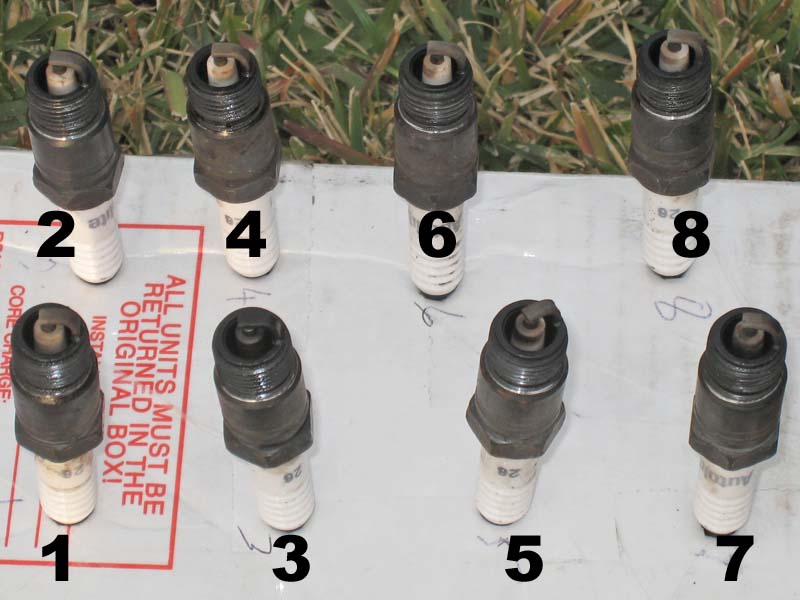
viewtopic.php?f=50&t=10623&p=45691#p45691
you really need to purchase a multi meter and a SHOP MANUAL and look thru the schematics
without testing theres almost no way to locate the source of your problem,, testing will tell you
http://www.helminc.com/helm


http://www.harborfreight.com/5-in-1-dig ... 98674.html
it is always helps to post your location,when posting questions, at least the city & state your located in because theres a good chance an experienced hobbyist or mechanic on this site may be reading this, located local to you, who is willing to help either for free or at low cost! or at least post advices and places to get parts locally

Ive been building engines for over 47 years now, and yeah,eventually even my hard head learned, a few things, but I,m sure willing too learn and ask questions, and use any new info posted
can a few of you gentlemen explain to me why??
when I suggest isolating and testing each separate potential component of both the fuel and ignition, systems and checking the engines valve train and checking compression, fuses, and sensors and pulling trouble codes and using the factory shop manual and a few tools like a mufti-meter and compression gauge, IR TEMP THERMOMETER,VACUUM GAUGE, and listed tests, even when I supply rather extensive links showing extensive detailed info, the majority of the guys reading thru the threads obviously ignore the info that could be used too locate the source, in most cases youll need too, isolate it test it and fix it rather than making random wild guesses without any facts or testing?
look if you don,t isolate the problem to its source through accurate testing there,s almost no other logical way to locate and fix the problem.
GUYS I NEVER SAID I,M A GREAT MECHANIC, BUT I HAVE LEARNED THAT IF YOU TAKE THE TIME TO BREAK THINGS DOWN INTO THE SIMPLEST PART AND DO A BIT OF RESEARCH, FINDING ANSWERS IS FAR LESS INTIMIDATING OR DIFFICULT,
youll need to isolate any problem to its source, be it engine, drive train, suspension,fuel system, electric, cooling, exhaust, etc. then further logically isolate it to the defective component, or part needing adjustment or replacement
like the old saying how do you eat an elephant......one little bite at a time!
all the answers are readily available, theres known testing procedures and listed test results you can expect, and procedures listed in the shop manual for isolating and testing components, you don,t need to be a genius, you just need to be logical and persistent and not afraid to learn new things while getting your hands dirty at times
THE FASTEST AND EASY ROUTE IS TO ISOLATE AND TEST< NOT RANDOM GUESS WORK
buy a CHEVY SHOP MANUAL FOR YOUR YEAR CORVETTE!
set and verify your ignition timing, pull trouble codes,set your tps and iac,, then check for vacuum leaks on the lines and intake,then get out your multi meter and verify all the sensors, chances are good its a defective heat sensor or defective o2 sensor, a logical step by step approach will lead you to the problem, youll be amazed at what youll learn reading links. use of a shop manual and multi meter can be very helpful


http://www.harborfreight.com/5-in-1-dig ... 98674.html
learn to use the factory shop manual, and a multi meter and LISTEN to the engine closely, tapping and high pitch whines can indicate defective injectors or fuel pressure regulators, fuel pumps,mis- adjusted valve train components, worn distributor parts, check all the fuses and electrical grounds and corrosion on connections thats something thats frequently over looked etc.
http://www.chevythunder.com/Flow chart index.htm

http://www.professionalequipment.com/ex ... ermometer/
having a good cross check tool like a quality IR temp gun, and a decent multi meter, sure helps find the truth as far as a defective gauge or sensor
READ THESE LINKs
viewtopic.php?f=50&t=10012&p=38779#p38779
viewtopic.php?f=36&t=63
if your installing a new component ,read the manufacturers instructions carefully and call the tech guys if ANYTHINGS not 110% clear
RULE two
IF something won,t fit or function....STOP, call the the tech guys ,after you re-read the manufacturers instructions carefully and measure carefully so you sound at least 1/2 way like you know what talking about, then call the tech guys if ANYTHINGS not 110% clear

RULE three
STOP AND DO THE REQUIRED RESEARCH if youve got questions
I never mind sounding dumb as long as I get the correct answers, so I won,t LOOK dumb by doing something wrong

rule four
isolate the problem to a lack of or Mal -function in,engine compression,ignition,lubrication,cooling, fuel supply,drive-train,or suspension, or a mechanical or electrical fault as soon as you can, this can only be done by testing and verification, don,t guess or assume anythings correct until you verify it yourself
yes reading the sub linked info is mandatory if you want answers
http://www.helminc.com/helm/welcome_sel ... M2S049ETF8
CHECK ALL YOUR FUSES WITH A MULTI METER

http://www.clarks-garage.com/shop-manua ... tm#oil-low
http://www.davidfarmerstuff.com/
when ever you get into unexplained symptoms the answer remains the same....in every case,.... you drop back to the basics and do a few tests, get out a multi meter and verify every fuse is good, and you have 13 volts at the battery and youve got at least a 1/2 tank of fresh fuel, before you start chasing your tail, thinking about more complicated problems
find the cause, you isolate, each function or system or malfunction to its related components then test, each individually, use of the shop manual is almost mandatory
erase old trouble codes and pull new codes after each change, made.
read the codes, and follow the FACTORY SHOP MANUAL INFO
there could be several reasons and a few tests will limit the potential problem areas,valve float, restricted fuel pressure,or volume, badly adjusted carb floats, wrong jets, wrong power valves, dirty or restricted air filter, cam timing, ignition timing, carb being badly adjusted,valves being badly adjusted, ignition advance curve not correct, timing tab or damper, not correctly indicating TDC, etc. ignition spark should be bright blue and impressive, if its, weak,narrow, yellow or red theres a problem so research the cause, verify the coil and voltage
you start by dropping back to the basics , adjusting or verifying or correcting each potential problem area and eliminating it as the cause, then and only then moving on to the next area, guessing will drive you nuts and cause you to throw large amounts of un-necessary parts at the problem with little resulting improvements. a logical step bye step approach is best, youll need to verify cylinder compression, ignition, strength and timing and fuel and air delivery, ID also suggest a compression test and a general checking over,each potential engine and drive line sub-system carefully, with a timing light,vacuum gauge, fuel pressure gauge, VOM meter , ETC. and adjusting valves, checking for vacuum leaks, check fuel pressure and post clear pictures of spark plugs as they give a ton of info if you know how to read them, etc.it helps a great deal to know what your working with ,ID suggest starting, by verifying TDC and having the correct timing tape on your damper then,start with 8 degrees btdc and verifying the full advance of 36 degrees total is all in at 3200rpm as a base line, once youve got that, as a standard you can tune and run the car and eventually try tweaks to the basic ignition curve if needed, once you have an ignition base line, move on to the carbs tuning, you also need to keep in mind that what goes in as a fuel /air mix needs to go out as a much expended volume of hot gases and a restrictive exhaust will effectively block most attempts to get more power from an engine, so measure exhaust back pressure. you might be amazed at what a couple hours research into the subject will do to help you build a much more durable engine, and actually reading thru links and sub-links and asking questions helps a great deal
you might be amazed at the number of times "CARBURETOR PROBLEMS" are cured with getting the IGNITION, TIMING AND ADVANCE CURVE WORKING CORRECTLY, and check out the simply things your 100% sure you did correctly, because I can,t begin to tell you how many times I see guys who have the firing order on the ignition wrong, or guys that install a 4/7 swap cam and still use the standard ignition firing order or guys that never verify TDC and ignition advance curves.
get an IR temp gun and check for wild variations in exhaust temps, get a compression test done, do a logical check to verify each cylinder fires etc.
Id also be pulling and changing the oil filter and inspecting the old one for metallic debris indicating a worn cam lobe, assume EVERY SUB SYSTEM could be miss adjusted or defective EVEN if you just replaced parts recently
basically an in depth tune-up and system verification is whats needed
viewtopic.php?f=54&t=4611
viewtopic.php?f=70&t=202
viewtopic.php?f=55&t=109
can,t get it started? these bits of info should help
always drop back to basics
check your battery cable connections
check your fuses and get out your shop manual.
IF you have the option pull trouble codes.
have you verified TDC on the damper and timing tab?
have you done a compression test?
are all the spark plugs firing correctly?
did you degree in the cam or just DOT-to-dot install it?
whats your fuel pressure?
have you verified the carbs float levels?
does fuel run out the site holes at idle?
are the needle& seat valves working correctly?
whats your ignition timing?
do you have voltage at the coil?
whats your plenum vacuum?
have you verified the engine got no vacuum leaks?
whats the oil pressure?(did you check the dip stick?)
have you adjusted the valves at idle?
does the distributor timing advance with rpm increases?
have you tried a different carb?
what are the plugs gaped at?
does this happen without an air filter?
have you verified you've have functioning power valves?
what jets are you using?
is there visible fuel flow from the boosters?
whats your battery voltage?
whats your exhaust back pressure?
are you totally sure the fuel free of water and fresh?
have you pulled trouble codes?
drop back to basics, don,t assume you did anything correctly until you verify, its been done correctly.
first remove plug #1 and your valve covers and the distributor cap
stick a large ratchet/socket on the crank bolt and stick your thumb over the #1 plug hole rotate the engine until you feel compression building the rotor on the distributor should be approaching the #1 plug, now watch the timing tab and damper mark, it should line up at the TDC (TOP DEAD CENTER) marks , if its lined up with #6 and you get no compression on the #1 cylinder when the TDC lines up the engine needs another rotation,if you get compression on the #1 cylinder when the TDC lines up with rotor pointing at #6 the distributor 180 out) and the distributor needs to be pulled rotated 180 and re installed.
If your running a carb, now verify you have 4-5 psi of fuel pressure and your getting spark at the plugs once the distributor cap and wires are installed, verify the firing order and once it starts back off each rocker nut at idle until the rocker clicks than tighten slowly just to the point it stops clicking and then add 1/4 turn of preload. verify your exhaust is not clogged, a partly melted catalytic converter can kill off power fast
READ THRU these links, and the sub linked info in them, should help
viewtopic.php?f=55&t=109
viewtopic.php?f=70&t=202
viewtopic.php?f=70&t=875
viewtopic.php?f=56&t=495&p=26600&hilit=clogged+converter#p26600
viewtopic.php?f=70&t=3301
viewtopic.php?f=44&t=773
http://forum.grumpysperformance.com/viewtopic.php?f=70&t=1411
http://forum.grumpysperformance.com/viewtopic.php?f=70&t=967
viewtopic.php?f=81&t=1189&p=2447#p2447
http://forum.grumpysperformance.com/viewtopic.php?f=70&t=270
viewtopic.php?f=32&t=1401&p=3104#p3104
viewtopic.php?f=55&t=1475&p=3325&hilit=testing+sensor#p3325
http://forum.grumpysperformance.com/viewtopic.php?f=70&t=1015
http://forum.grumpysperformance.com/viewtopic.php?f=55&t=1115
http://forum.grumpysperformance.com/viewtopic.php?f=52&t=196
http://forum.grumpysperformance.com/viewtopic.php?f=62&t=882&p=1390&hilit=+propane#p1390
viewtopic.php?f=44&t=773&p=1123#p1123
viewtopic.php?f=44&t=808&p=1180#p1180
viewtopic.php?f=44&t=808
viewtopic.php?f=44&t=777
all it takes to find out why your not making the hp you think you should be is actual testing to find out what your dealing with and what needs improving or changes
be fore you make changes you need to have a base line your working from
do these tests
did you verify TDC or just install the cam dot-to-dot?
whats your compression read?
whats the battery voltage read when the engines running?
post very clear pictures of all 8 plugs?
whats your EXACT ignition advance curve?
whats the plenum vacuum read at wide open throttle?
whats the exhaust system pressure in the collector pipe read at wide open throttle?
viewtopic.php?f=56&t=495
viewtopic.php?f=55&t=109
viewtopic.php?f=70&t=202
viewtopic.php?f=70&t=1809
viewtopic.php?f=70&t=4683
watch the video
http://www.youtube.com/watch?v=YdIGZ-tV ... re=related
is it mechanical?
look for broken parts, loose connections, leaky hoses
are the CATS clogged or the O2 sensors faulty
check the compression in all cylinders
re-adjust the valves
look for vacuum leaks
look for loose serpentine belts
look for cooling system problems
check the trans fluid level and condition
check oil and fuel levels
check the rear differentials fluid level and condition
check the engines oil level and condition
check the brake fluid level and condition
change the filters
check the throttle body is opening completely
verify the TPS and IAC are set correctly, and use some carb/throttle body cleaner to clean up the TB.
what are the engines oil pressure, fuel pressure and cooling system temps?
if somethings wrong there's usually symptoms that point to the source!
IS it electrical?
verify the MAT, MAP, and or MAF sensors are working correctly
verify the coolant temp sensor and knock sensor are working
set the ignition timing
install new plugs with a .045 gap
verify the O2 sensors ok
look for loose grounds, on the engine,gauges,battery
check the battery voltage
check the fuel pump and relays
use a V.O.M. to verify plug wire resistance
check/replace the distrib cap.
VERIFY ALL SENSORS and FUSES and CONNECTIONS are ok, verify the voltage on the systems correct
IS it fuel related
verify the pressure and flow
verify the injectors are functioning correctly
read the old plugs
use a ir temp gun to verify exhaust temps
throw a couple cans of injector cleaner and 8 oz of MARVEL MYSTERY OIL into a fresh tank of fuel, it can clean out lots of minor varnish in the system
when you try to track down any problem with a cars engine you need to start with the basics of
fuel pressure,
and a compression check,
checking for vacuum leaks,
checking the valves are adjusted correctly,
verify the battery has a minimum of 12.5 volts
and the alternator boosts that while running to over 13 volts
verifying that your timing marks are at T.D.C,on the damper
verify that the timing tab indicates true T.D.C.
have a quality timing light and know how its used
and your ignition timing curve is correct, and smoothly advancing as the rpms build.
verify the timing is close to the shop manual suggestions
check all the fuses and engine grounds,
and get out a infrared temp gun and look for marked changes in the exhaust temperatures, indicating non-firing cylinders or fuel distribution issues
verify the oil temperature and pressure
verify the engines got less than 2 psi of exhaust back pressure
learn to read spark plugs as they are a great indicator of conditions in the combustion chamber
learn to use a vacuum gauge
if you have one a fuel/air ratio meters a big help
BUT HAVE A SHOP MANUAL and take the time to READ IT!
tools you really need
SHOP MANUAL
timing light
vacuum gauge
IR temp gun
degree wheel
dial indicator and stand
fuel pressure gauge
V.O.M. meter
torque wrench
magnifying spark plug reader
lift or (4) 12 ton jack stands
basic mechanic hand tools
floor jack
90% of your problems will be found just running thru the check list and following the shop manual suggestions, yes diagnostic software , and owning a scanner is a very good idea!
yes I know your 100% sure the ignition timing and the plug wires are correctly installed..CHECK THEM AGAIN CAREFULLY SEVERAL TIMES
The first thing ID do is VERIFY the CAUSE, OF THE PROBLEM FOR THAT, THRU ISOLATING AND TESTING, COMPONENTS AND SYSTEMS
A SHOP MANUAL IS ALMOST MANDATORY,
THESE LINKS should help
remember most problems come down to the basics of DO YOU HAVE FUEL?, IGNITION, OR COMPRESSION?, OR IS THERE SOMETHING MECHANICALLY WRONG,? once youve isolated the basic problem its source will become rather obvious in many cases
viewtopic.php?f=80&t=728
viewtopic.php?f=55&t=1241&p=3037&hilit=+sensor#p3037
do a compression test and inspect the rocker movement very carefully on EACH CYLINDER and POST THE RESULTS to insure your not fighting a mechanical issue before we start, verify the rockers are adjusted and verify TDC on the damper and timing tab ARE REALLY INDICATING TDC on the engine, then verify your ignition advance starts at about 10 degrees BTDC at idle and smoothly advances to about 36 degrees at 3200rpm, use a VOM or multi meter to verify each spark plug wire reads UNDER 2000 ohms per foot,and that youve got 13 volts at the coil with the engine running at idle
check for vacuum leaks
verify your float levels,if you have a carb and fuel pressure with either a carb or injectors
while your at it post clear pictures of each spark plug labeled with the cylinder it came from
pictures like this tell a great deal

viewtopic.php?f=50&t=10623&p=45691#p45691
you really need to purchase a multi meter and a SHOP MANUAL and look thru the schematics
without testing theres almost no way to locate the source of your problem,, testing will tell you
http://www.helminc.com/helm


http://www.harborfreight.com/5-in-1-dig ... 98674.html
Last edited by a moderator:

